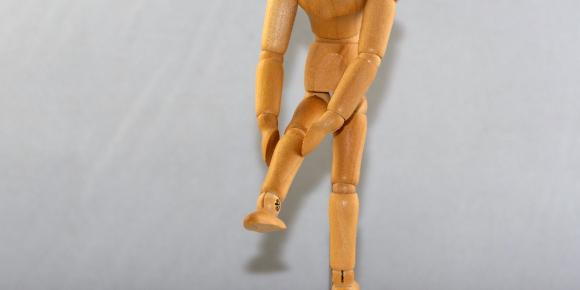Sciatica
posted: Oct. 23, 2013.

Sciatica is a certain pain that starts in the lower back and travels through the buttock and down the large sciatic nerve in the back of your leg. Pain from sciatica can range from a dull ache to a sharp or burning and numbness sensation of discomfort. You may feel discomfort almost anywhere along the nerve pathway of your lower back and down your leg, but it is most likely to follow the path from your lower back to your buttock and the back of your thigh or calf.
Symptoms of sciatica are often characterized by one or more of the following:
- Burning or tingling down the leg
- Pain that is worsened by sitting or bending forward
- Constant pain in only one side of the leg or buttock
- Weakness or numbness when moving the leg or foot
- Pain is usually described as a “pins-and-needles” sensation or prickling sensation down the leg.
Sciatica is a symptom of an underlying medical condition. Treatment is focused on relieving the underlying causes. Listed below are some of the most common causes of sciatica.
- Spinal tumor- In rare cases, a spinal tumor can interfere with a nerve root and cause sciatica.
- Pregnancy- Changes in the body including weigh gain, shift in center of gravity and hormonal changes can cause sciatica during pregnancy
- Scar tissue- Scar tissue can compress the nerve root and cause sciatica.
- Spinal stenosis- This is a narrowing of the spinal canal. This condition usually results in enlarged facet joints, bulging disc, and or overgrowth of soft tissue.
- Degenerative disc disease- This is a natural process that occurs with aging. This is when a weakened disk results in inflammatory proteins become exposed and irritate the area.
- Piriformis syndrome- The sciatic nerve becomes trapped in the buttock by the piriformis muscle.
- Lumbar herniated disc- This occurs when the inner core of the disc leaks out or herniates through the outer core. This is also known as a ruptured disc, bulging disc, or a pinched nerve.
- Spinal Subluxation- A severe misalignment of the lumbar spine can irritate nerves that make up the sciatic nerve.
There are two major types of treatment for sciatica which are invasive and non-invasive. A non-invasive approach would be the best results if it is an option as there is less scar tissue, and less chance for adverse affects. Invasive treatments in some cases are used if the symptoms are severe enough. Usually invasive procedures are only performed if the non-invasive approaches have been exhausted with little to no relief.
Non-invasive
- Ice/Heat
- Chiropractic
- Physical Therapy
- Stretching
- Exercise
- Medications such as anti-inflammatory, muscle relaxants, and narcotics
Invasive
- Steroid injections
- Surgery
With either approach whether it be invasive or non-invasive, make sure you contact one of the doctors at Gallatin Valley Chiropractic to determine which category you are in and to determine if chiropractic along with other non-invasive procedures are right for you.
Call us: 406-551-2177
Schedule online at: https://appointments.mychirotouch.com/?clinic=GVCL0001